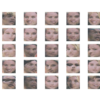The generative adversarial network, or GAN for short, is a deep learning architecture for training a generative model for image synthesis. The GAN architecture is relatively straightforward, although one aspect that remains challenging for beginners is the topic of GAN loss functions. The main reason is that the architecture involves the simultaneous training of two […]










